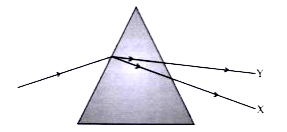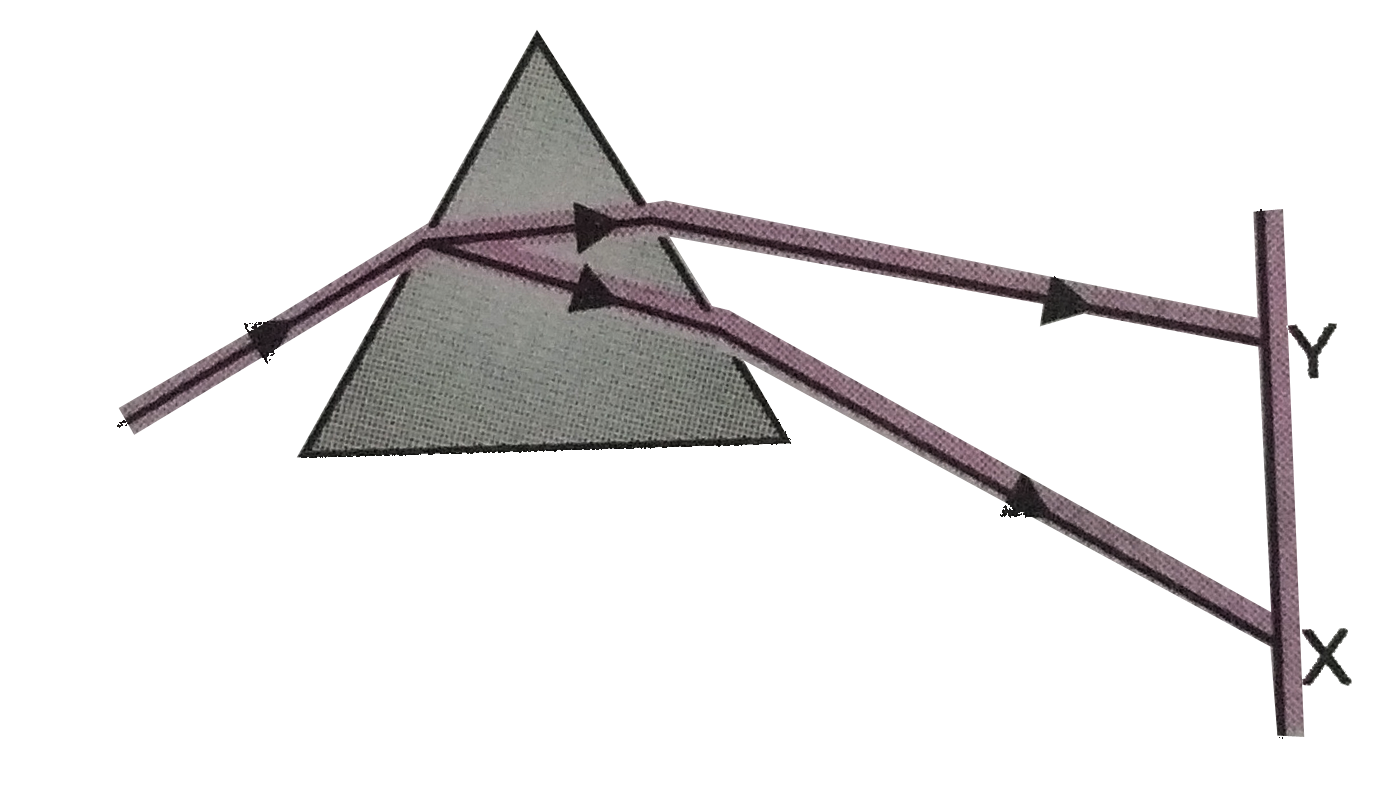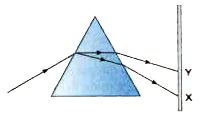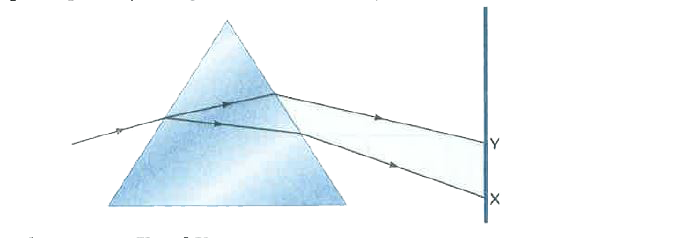In the figure given below, a narrow beam of white light is shown to pass through a triangular glass prism. After passing through the prism, it produces a spectrum XY on the screen.

(i) Name the phenomenon.
(ii) State the colours seen at X and Y.
(iii) Why do different colours of white light bend at different angles through a prism ?
(i) It is dispersion of light.
(ii) X - Violet colour, Y - Red colour
(iii) As light of different colours travels with different speed inside the prism, hence different colours bend at different angles.
Topper's Solved these Questions
- SAMPLE QUESTION PAPER 2019 - 20 (SOLVED)BOOK - U-LIKE SERIESCHAPTER - SAMPLE QUESTION PAPER 2019 - 20 (SOLVED)EXERCISE - SECTION C
15 Videos
- SAMPLE QUESTION PAPER 2019 - 20 (SOLVED)BOOK - U-LIKE SERIESCHAPTER - SAMPLE QUESTION PAPER 2019 - 20 (SOLVED)EXERCISE - SECTION C
15 Videos
- MAGNETIC EFFECTS OF ELECTRIC CURRENT BOOK - U-LIKE SERIESCHAPTER - MAGNETIC EFFECTS OF ELECTRIC CURRENT EXERCISE - LONG ANSWER QUESTIONS
18 Videos
- THE HUMAN EYE AND THE COLOURFUL WORLD BOOK - U-LIKE SERIESCHAPTER - THE HUMAN EYE AND THE COLOURFUL WORLD EXERCISE - LONG ANSWER QUESTIONS
8 Videos
Similar Questions
In the figure given below. a narrow beam of white light is shown to pass through a triangular glass prism. After passing through the prism, it produces a spectrum XY on the screen.

Name the phenomenon.
View SolutionA narrow beam of white light is shown to pass through a triangular glass prism. After passing through the prism, it produces a specturm XY on a screen.
(a) State the colour seen at XandY.
(b) Why do different colours of white light bend through different angles with respect to the incident beam of light ?
 .
.
View Solution
Knowledge Check
When white light passes through a glass prism
Ared coloured ray undergoes maximum deviation.Bgreen coloured ray undergoes minimum deviation.Cblue coloured ray undergoes minimum deviation.Dviolet coloured ray undergoes maximum deviation.
A narrow beam of white light is shown to pass through a triangular glass prism. After passing through the prism, it produces a specturm XY on a screen.
(a) State the colour seen at XandY.
(b) Why do different colours of white light bend through different angles with respect to the incident beam of light ?
 .
.
View SolutionIn the given figure, a narrow beam of white light is shown to pass through a triangular glass prism. After passing through the prism it produces a spectrum XY on a screen.
(a) State the colour seen at X and Y.
(b) Why do different colours of white light bend through different angles with respect to the incident beam of light?

View SolutionIn the given figure, a narrow beam of white light is shown to pass through a triangular glass prism. After passing through the prism it produces a spectrum XY on a screen.

(a) State the colour seen at X and Y.
(b) Why do different colours of white light bend through different angles with respect to the incident beam of light?
View SolutionDoes a beam of white light give a spectrum on passing through a hollow prism ?
View SolutionDoes a beam of white light give a spectrum on passing through a hollow prism?
View SolutionA beam of white light passing through a hollow prism give no spectrum.
View SolutionWhy do we get colours when white light passes through a prism ?
View Solution
